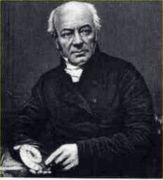Nichollsia borealis, one of the oldest and most complete plesiosaur fossils recovered in North America, and the oldest yet discovered from the Cretaceous Period, was uncovered in a Syncrude Canada Ltd. mine near Fort McMurray, Alberta, in 1994.

Two U of Calgary scientists,
Dr. Patrick Druckenmiller and Dr. Anthony Russell have named the 2.6m long plesiosaur
Nichollsia borealis in memory of the late
Elizabeth (Betsy) Nicholls, former curator at the Royal Tyrrell Museum of Palaeontology. Nicholls was a renowned palaeontologist who is credited with transforming the understanding of prehistoric ocean life by describing the largest-ever marine reptile, a 23-metre-long ichthyosaur, discovered in northern British Columbia in 1999.
 Elizabeth (Betsy) Nicholls conducting field work in northeastern B.C. Photo:Rolex Awards/Tomas Bertelsen.
Elizabeth (Betsy) Nicholls conducting field work in northeastern B.C. Photo:Rolex Awards/Tomas Bertelsen.“We chose this name because Betsy was a key player in the study of marine reptiles, a mentor to me, a former student of Tony, and a great person,” said Druckenmiller, who is now Curator of Earth Sciences at the University of Alaska Museum of the North in Fairbanks, Alaska. “We felt it was a fitting way to honour both her memory and her accomplishments in palaeontology.”
The fossil was discovered by machine operators Greg Fisher and Lorne Cundal in 1994 during routine mining operations at Syncrude’s Base Mine, about 35 kilometres north of Fort McMurray near the Athabasca River. Amazingly, the specimen was serendipitously exposed by one of Syncrude’s 100-ton electric shovels approximately 60 metres below ground surface. It is complete except for its left forelimb and shoulder blade.
Nichollsia is also very significant because it fills a 40-million-year gap in the plesiosaur fossil record and greatly increases the understanding of the ancient seaway that once split North America in two and whose shores abounded with dinosaurs.
“This individual was a pioneer in the marine waters that would eventually become the Cretaceous Western Interior Seaway, which ran the length of North America during much of the Cretaceous and was home to one of the world’s most diverse communities of marine reptiles,” Druckenmiller said. “It represents the oldest known forerunner of this amazing period in North American prehistory.”
Nichollsia borealis is currently on display in the Discoveries Gallery at the
Royal Tyrrell Museum. The paper is published in
Palaeontographica Abteilung A, but I can’t find a doi for it.

















































